34 Amazing Christmas Tree Facts to Make the Holidays Extra Magical
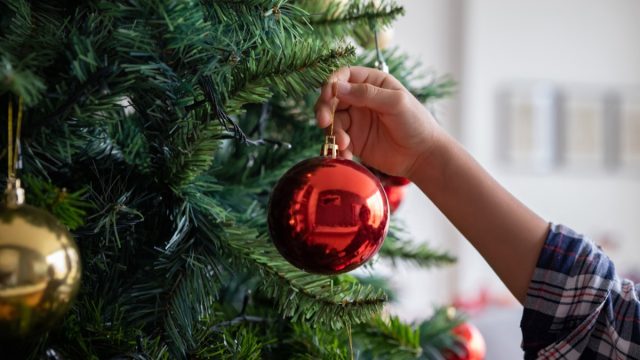
Nothing elicits quite the same amount of joy during the month of December as a beautifully decorated Christmas tree. It may seem like it’s always been a tradition for families to hang ornaments, tinsel, and lights from evergreens, but the truth is that these festive firs only became a Christmas custom stateside in the last couple hundred years. In fact, many cultures, countries, and centuries shaped the way our Christmas trees look today. So if you’re a holiday history buff, keep reading for some of the most amazing Christmas tree facts we could find. They’re sure to make you feel merry and bright!
RELATED: 70 Fun Christmas Facts to Get You in the Holiday Spirit.
34 Christmas Tree Fun Facts
1. Christmas trees used to hang like chandeliers in Poland.
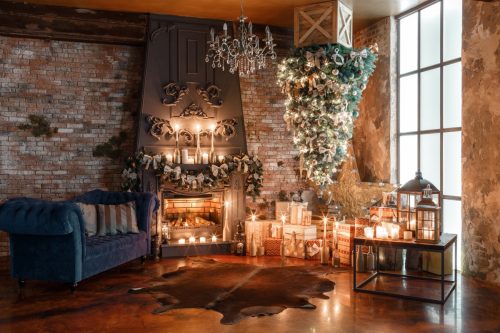
Don’t be alarmed if you see a tree hanging upside down from the ceiling. This trend actually originated in medieval times, according to The Spruce. Legend goes that a Benedictine monk used the triangle shape of the inverted tree to explain the Holy Trinity to pagans. But the idea really took off in the 1900s in Poland with podłaźniczek, a custom where Polish people decorated the branches with fruit, nuts, and ribbons, then hung the tree from the ceiling!
2. Ukrainians decorate their Christmas trees with spider webs.
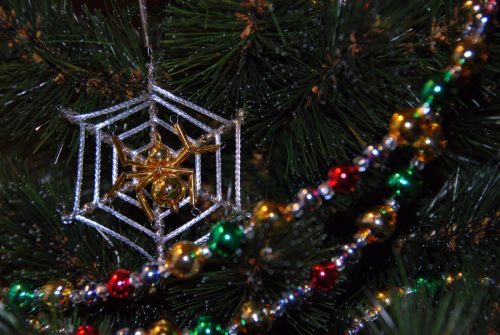
While it sounds ominous, this tradition is actually rooted in a heartwarming folktale about a poor widow who found a Christmas tree for her children. However, she had no money to decorate it, so on Christmas Eve, she went to bed crying. That night, spiders heard her tears and proceeded to cover the tree with delicate, glistening webs. Some versions of the story say the webs actually turned into silver and gold, while others say they merely looked like precious metals—either way, the widow felt rich come Christmas morning.
“Spiders have always been considered ‘good luck insects’ in Ukrainian tradition,” Lubow Wolynetz, folk art curator at the Ukrainian Museum in New York City, told Today. In honor of this, many Ukrainian families decorate their trees with silver and gold cobwebs and spiders today.
3. Thomas Edison’s colleague was the first to put electric lights on a Christmas tree.
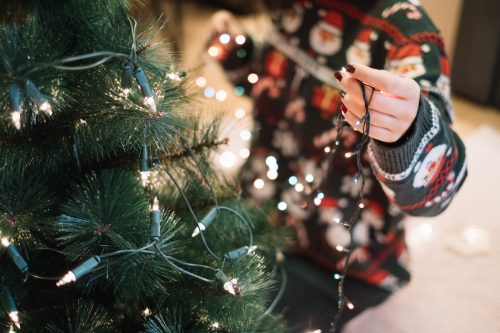
Some people say Thomas Edison himself did this, but let’s not let Edison take more credit than he deserves. It was actually his colleague and friend, Edward Johnson, who first thought of putting electric lights on a Christmas tree instead of the traditional candles, according to the Library of Congress. However, the first bulb-lit tree did stand in Edison’s power plant in Manhattan in 1882, set on a rotating box so that passersby could see all 80 blinking red, white, and blue lights. No one had seen anything like it.
4. One of the first tree-decorating traditions involved setting firs on fire.
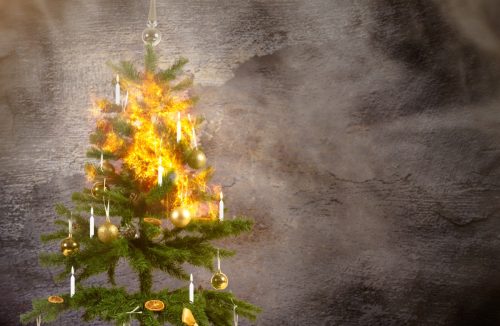
One of the first Christmas tree-decorating ceremonies involved adorning a fir tree with paper flowers, singing and dancing around it, and then—brace yourself—lighting the entire thing on fire. According to The New York Times, that all took place in the town square of Riga, the capital city of Latvia, in 1510. (Although Tallinn, the capital of Estonia, claims it was the first to celebrate in 1441.)
At that time in northern Europe, Christmas celebrations looked very different than they do today. The festivities ran from the end of November until the New Year, but the dazzling spectacle of our Christmas trees today would likely be just as much of a shock to them.
5. Early Romans were the first to celebrate with firs.
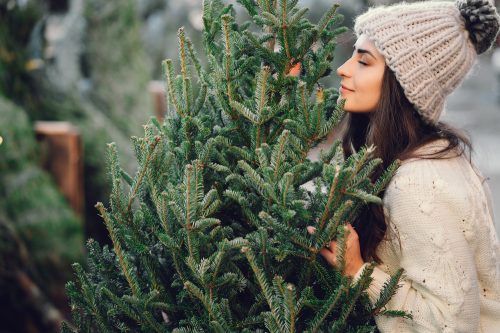
Evergreen trees have been synonymous with Christmas for centuries. Early Romans used evergreens to decorate their temples for Saturnalia, a festival they celebrated in December. When Christians began associating the birth of Christ with these previously existing winter holidays, they picked up on the evergreen tree as a symbol of eternal life, explains Dixie Sandborn of Michigan State University Extension.
6. Cherry trees were once used as Christmas trees.
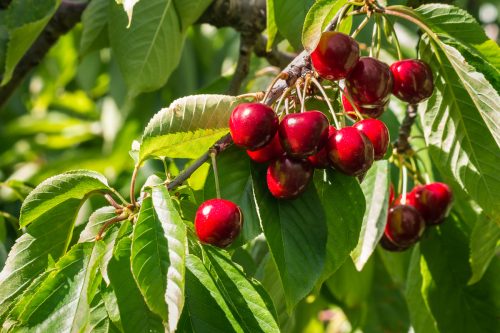
These days, the most popular Christmas trees are Blue spruce, Scotch pine, Douglas fir, Fraser fir, balsam fir, and white pine. However, in the early days before everyone settled on firs and pines, some Europeans used cherry or hawthorn trees as their Christmas greenery, according to Sandborn. The appeal of these trees was in their flowers. If you cut off a branch, brought it inside, and set it in a pot of water, it would flower just in time for Christmas.
7. Americans buy upwards of 30 million Christmas trees a year.
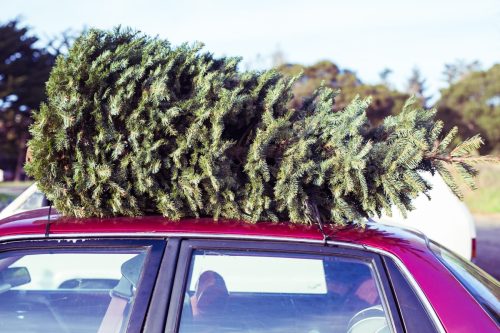
According to the National Christmas Tree Association (NCTA), 25 to 30 million live trees are harvested annually. The total land needed for all those farms comes to 547 square miles—about twice the size of the greater Chicago area. Fortunately, these farms help preserve green space, and they also employ about 100,000 Americans each year. (Alternatively, as the NCTA points out, most artificial trees are made in China.)
8. Christmas trees are farmed in all 50 U.S. states.
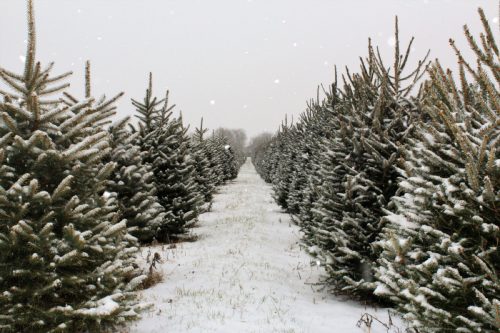
The NCTA also notes that there are approximately 350 million Christmas trees growing in the U.S. alone, with farms sprinkled across all 50 states—and that includes Alaska and Hawaii. California, Oregon, Michigan, Washington, Wisconsin, Pennsylvania, and North Carolina remain the top Christmas tree-producing states, however.
RELATED: 43 Christmas Jokes That’ll Make You Fa-La-La-Laugh Out Loud.
9. Christmas tree farms are sustainable.

Concerned about the impact getting a fresh tree may have on the environment? Don’t be. As Green America points out, the vast majority of cut Christmas trees come from tree farms, which “generally plant about two trees for every one they cut.” If it’s important to you to support a farm that doesn’t use chemical pesticides, you can search “Local Harvest for organic tree farms.”
10. They’re also good for the environment.
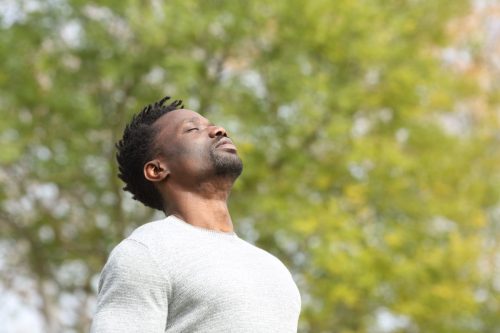
Growing Christmas trees also provides habitats for wildlife, cleans the air, and produces oxygen. Some environmentalists even suggest sinking your trees at the end of the season to create a safe and robust ecosystem for fish living in small lakes and ponds.
11. The Rockefeller Center Christmas tree idea came from construction workers.
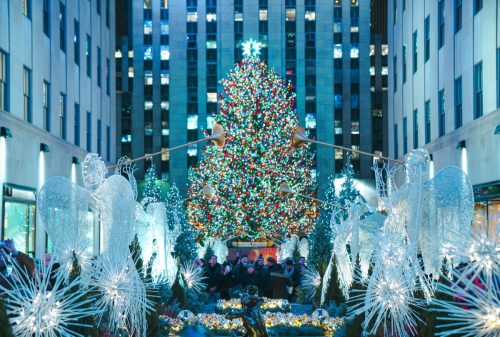
The huge holiday spectacle at Rockefeller Center in New York City has humble beginnings. According to The New York Times, the Christmas tree tradition started during the Great Depression in 1931, when construction workers put up a mere 20-foot tree in the plaza and decorated it with paper garlands, strings of cranberries, and tin cans. Today, every year, a Norway spruce no taller than 100 feet is chosen, trucked into Manhattan, propped up in the plaza, and topped with a Swarovski crystal star that weighs more than 9,000 pounds. Look how far she’s come!
12. London’s Trafalgar Square Christmas tree is an annual thank you gift from Norway.
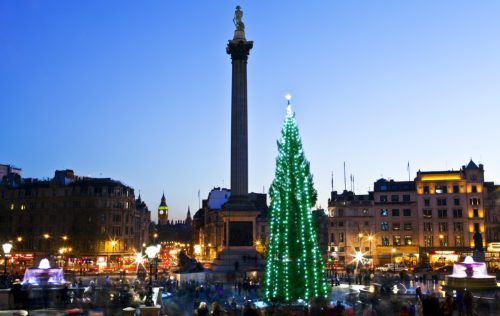
London has its own arboreal tradition: a huge Christmas tree in Trafalgar Square. This tree is a thank you gift from Norway. Every year since 1947, the people of Oslo have selected a 50- to 60-year-old spruce tree to cut down and ship to London as a way of showing gratitude to England for supporting Norway in World War II. In turn, Londoners decorate the tree in traditional Norwegian style, with vertical strings of lights descending from the star on top.
13. Australian Christmas trees are the world’s largest parasites.
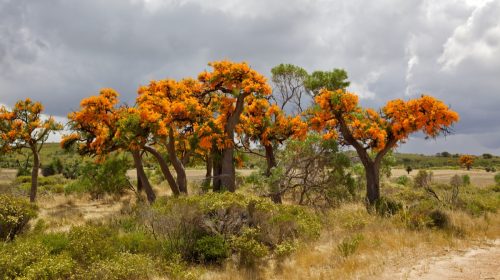
If you’ve heard the phrase “Australian Christmas tree,” you might imagine a fir tree on the beach, or possibly one in the ocean Down Under. However, the plant that Australians call a “Christmas tree” is actually an aggressive, hemiparasitic type of mistletoe. This parasite is believed to be the largest in the world, with its roots stabbing victims up to 360 feet away! It looks nothing like a conifer, but its yellow-orange flowers bloom around the holidays, hence the name.
14. Paradise trees aren’t what you think, either.
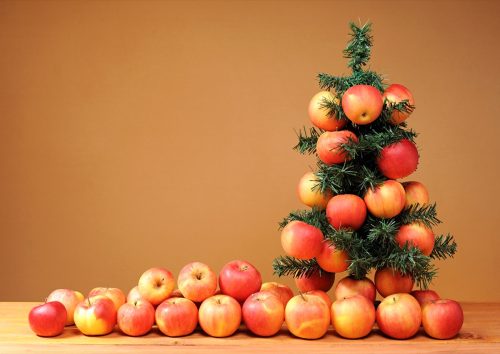
There are plenty of creative ways to describe what you might think a paradise tree looks like but unless you’ve got apples somewhere in your vision, you’re probably a little off-base. Legend holds that trees were commonly adorned with apples in Germany during the 16th century as a way to reference the Tree of Knowledge from the Garden of Eden. Eventually, the apples were replaced with tinsel and cookies, which is how we see many German Christmas trees decorated today.
15. The first artificial Christmas trees were made of dyed goose feathers and wire.
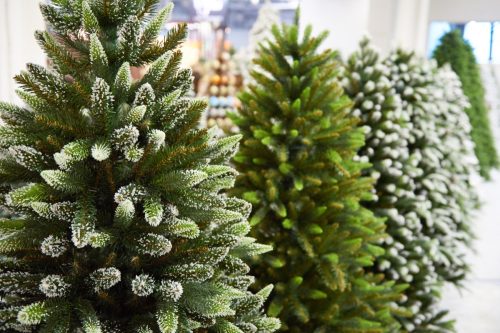
If you prefer an artificial tree, you’re not alone. It’s a cheaper and lower maintenance option, giving parents and pet owners one less thing to worry about during the holidays. Artificial trees date back to the 1880s when Germans looking to offset deforestation made the first ones from dyed goose feathers held together with wire. Since then, people around the world have made fake trees out of aluminum, cardboard, and glass, although most artificial Christmas trees sold today are made out of PVC plastic.
16. The largest artificial Christmas tree cost $80,000 to construct.

In Colombo, Sri Lanka, a 236-foot tall tree made of scrap metal and wood broke the Guinness World Record in 2016 for the world’s tallest artificial Christmas tree. The tree was surrounded by some controversy during construction—the local Catholic archbishop thought it was a waste of money (about $80,000) that should have gone to charity—and it ultimately didn’t stay up for long. It was dismantled in 2017 when folks realized it looked more like a rocket than a fir tree.
17. And the tallest living Christmas tree stood 221 feet high.

The Guinness World Record for the tallest living Christmas tree was given to Seattle’s Northgate Shopping Center back in 1950. The Douglas fir stood over 64 meters or around 221 feet tall.
RELATED: Christmas Puns That Will Absolutely Sleigh You.
18. New England Puritans banned Christmas trees in the late 17th century.
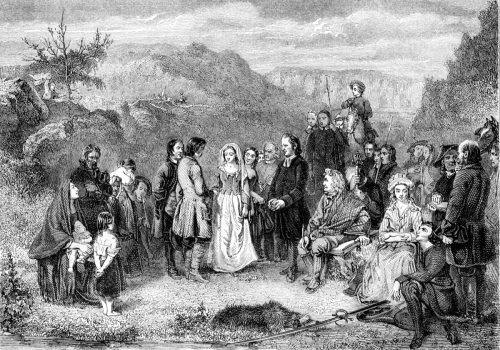
In 1659, the court of the Massachusetts Bay Colony formally banned any Christmas celebrations aside from a church service, which included the “heathen tradition” of hanging decorations. Christmas trees drew looks of scorn in America for nearly two more centuries before German and Irish immigrants finally normalized decking the halls.
19. Queen Victoria popularized the Christmas tree.
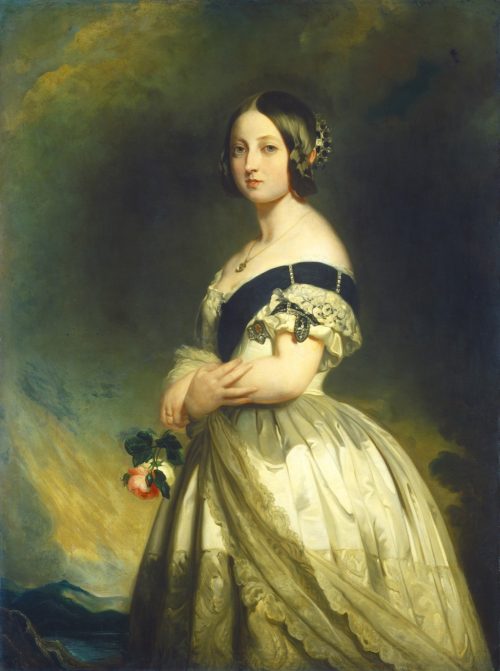
Though strict religious attitudes about Christmas trees had finally begun to soften by the early 1800s, it wasn’t until Queen Victoria and the royal family were sketched next to the household fir tree in 1848 that they truly became popular in the English-speaking world. Having grown up with a German mother, Victoria associated Christmas with evergreens decorated with oranges, cloves, and cinnamon sticks. The former colonies admired British royalty so much that Christmas trees finally became fashionable in America.
20. Germans believe it’s bad luck to put up your tree before Christmas Eve.

In order to avoid bad luck at Christmas, some Germans believe you should erect your Christmas tree no sooner than Christmas Eve (or sometimes Dec. 23) and take it down no later than Twelfth Night (Jan. 5). In some predominantly Catholic countries—Ireland, Italy, Argentina, etc.—the tree goes up on Immaculate Conception Day (Dec. 8) and comes down on Epiphany (Jan. 6), though some Catholics extend that to Candlemas (Feb. 2), according to Italy Magazine. However, everyone can agree that you should definitely not put your tree up before Halloween (or in America, before Thanksgiving).
21. The Vatican didn’t get a Christmas tree until 1982.
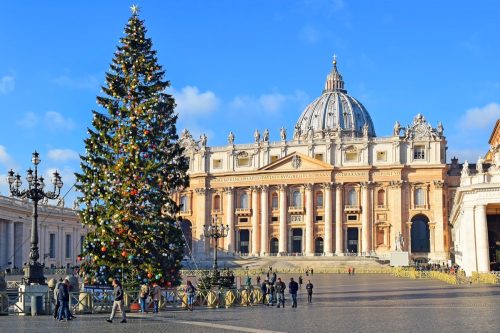
The Christmas tree was one tradition that the Catholic church snubbed for hundreds of years. It wasn’t until 1982 that Pope John Paul II, already known as a bit of a reformer, brought a Christmas tree into the Vatican to sit beside the traditional Italian Nativity crib. Today, the Catholic liturgy includes a prayer for officially blessing your tree.
22. The White House evergreen goes in the Blue Room.
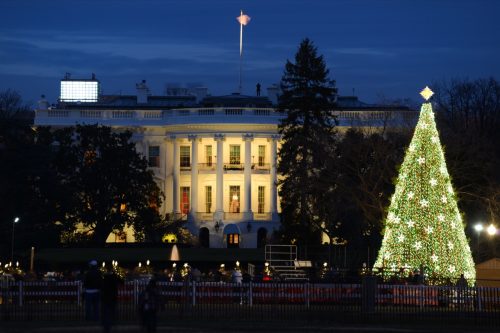
The official White House Christmas tree sits in the circular Blue Room, and every year since 1961, the First Lady has been in charge of selecting the theme and decorations for the tree. But this custom hasn’t always been without controversy—in 1899, many people urged President William McKinley to forgo the “un-American” display because of its German roots, according to The Washington Post. It’s even said that President Teddy Roosevelt banned Christmas trees for environmental reasons, but in fact, he displayed a tree for three of his eight Christmases in the White House. It was actually Calvin Coolidge who started the National Christmas Tree Lighting Ceremony, which is now held annually on the White House lawn.
23. The National Christmas Tree stayed dark in 1979.
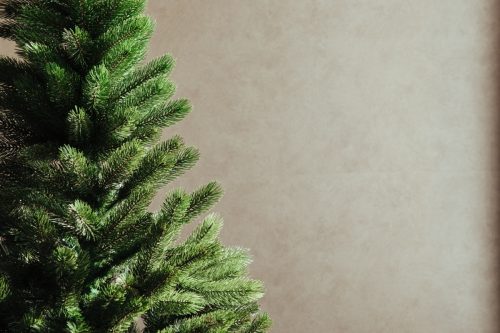
It was a surprise to onlookers when, during the National Christmas Tree lighting ceremony in Washington D.C. in 1979, only the star at the top lit up after President Jimmy Carter‘s daughter Amy threw the switch. The president then announced that the normally resplendent evergreen would stay otherwise dark throughout the season in honor of the Americans being held captive during the Iran hostage crisis. “We will turn on the rest of the lights when the hostages come home,” President Carter said, as reported by The Washington Post. (The hostages weren’t freed until January of 1981.)
24. One Florida city makes an annual Christmas tree out of 800 tons of sand.
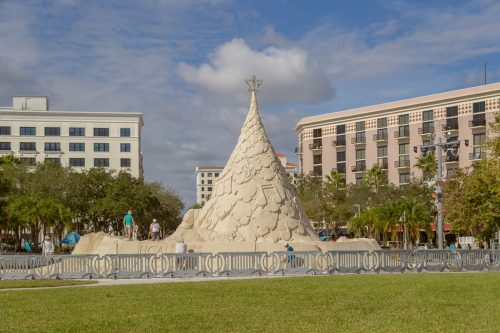
Every year West Palm Beach, Florida boasts that it has the world’s largest Christmas tree made entirely of sand. Eight hundred tons of the stuff go into making “Sandi,” a 35-foot peak strung with lights and topped with a star. During the month-long Holiday in Paradise celebration, kids are invited to explore Sandi-Land, a free attraction that includes musical shows, miniature golf, and more family-friendly events.
25. Americans make Christmas trees out of everything from lobster traps to hubcaps.
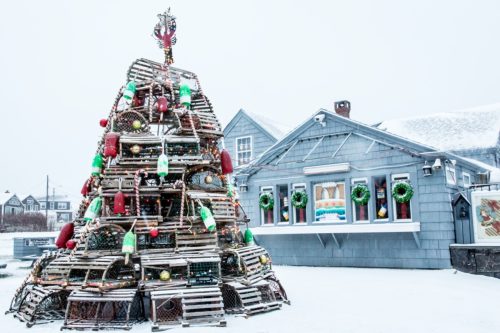
Some towns across the United States make Christmas trees out of materials even more unique than sand. For example, Baltimore, Maryland is home to a tree made out of hubcaps. And exactly 154 lobster traps comprise the 40-foot-tall Lobster Trap Tree in Rockland, Maine. Meanwhile, Junction, Texas displays a tree made of deer antlers; Chandler, Arizona turns tumbleweed into a glittery Christmas tree each year; and fittingly, Lynchburg, Tennessee makes a tree out of Jack Daniels’ whiskey barrels.
RELATED: 12 Small Towns That’ll Make You Feel Like You’re in a Hallmark Christmas Movie.
26. There are 500 chapters of the Hallmark Keepsake Ornament Club.
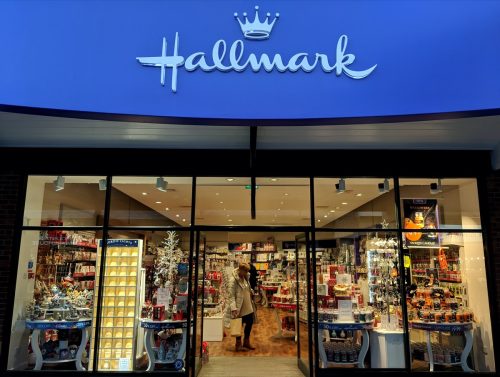
In 1973, Hallmark launched its Keepsake Ornament tradition. Each year, the company releases a new collection of Keepsakes—some with traditional holiday imagery, some pop-culture-themed—and collectors clamber for them. (8,500 designs and counting!) According to Hallmark’s website, there are 500 local chapters of the Hallmark Keepsake Ornament Club, which theoretically involves a lot of scouring eBay and arranging trades.
27. Christmas trees cause 160 fires every year.
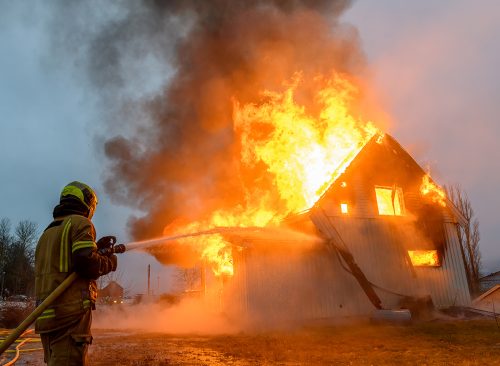
Between 2013 and 2017, Christmas trees caused an average of 160 household fires each year, according to the National Fire Protection Association. Collectively, those four years of Christmas tree fires resulted in $10 million in property damage and three deaths. To avoid becoming a statistic, firefighters recommend watering your tree daily, and—whether your tree is real or artificial—you should keep any heat sources at least three feet away, throw away any damaged lights or frayed wires, and unplug the lights when you go to bed at night or leave the house.
28. Tinsel used to contain lead when actual silver proved too pricey.
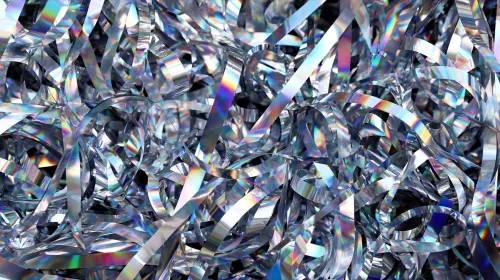
People have used metallic tinsel to decorate their Christmas trees since at least the 1800s. The shiny strips of metal reflect light, allowing for a sparkling tree even in candlelight. Originally, only the rich could afford tinsel, since it was made out of actual silver. Copper and aluminum became substitutes, but neither was ideal. According to The Atlantic, after World War I, tinsel makers settled on lead as the metal of choice, even though there were already inklings that it could be poisonous. It wasn’t until the ’70s that the Food and Drug Administration banned household products made of lead.
29. Christmas wreaths were first used to celebrate Advent.

Plant-based wreaths go back to ancient times when they were usually worn as crowns. But we have 16th-century Germans to thank for applying the wreath to Christmas traditions. They used Advent wreaths—set flat on a table—with four candles around the edge to count down the Sundays until Christmas.
30. Catalonian children have a “Christmas log.”

There’s more than one way to celebrate Christmas with a tree. In the Catalan region of Spain, many celebrate with a Tió de Nadal, or “Christmas log,” which is also sometimes called Caga Tió, or “poop log.” Starting on Dec. 8, the family puts out a hollow log (usually with a funny face and a red hat), and each day, the children take turns “feeding” it with dried fruit and nuts. Finally, on Christmas Eve, the children whack the log with sticks until it “poops” the treats back out. Guess that’s one way to keep kids entertained?
31. Popcorn garland is a truly American tradition.
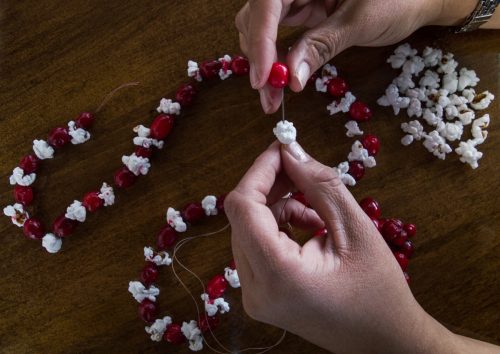
All it takes is some popcorn, cranberries, a needle, and dental floss to make your very own homemade Christmas tree garland. Though Germans traditionally decorated their trees with cookies, nuts, and fruit, Americans in the 1800s adapted that custom to long strings of popcorn and cranberries. While it’s unknown exactly why popcorn was chosen—likely because it was inexpensive—cranberries are perfect, since their waxy coating keeps them from spoiling quickly. If you want to try it yourself, just make sure you use day-old popcorn, which breaks apart less easily than fresh kernels.
RELATED: The Top Holiday Markets in the U.S., According to Yelp.
32. Christmas trees take nearly a decade to grow.
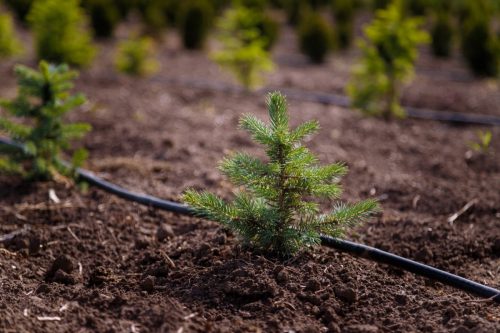
Your average six- to seven-foot Christmas tree takes between eight and 10 years to grow, according to CNN. Along the way, it will be sheared to keep its conical shape for easier decorating. For every real Christmas tree harvested, farmers usually plant up to three seedlings. Of the approximately 2,000 seedlings planted per acre, about one-half to three-quarters will make it to maturity.
33. Helicopters are used to help harvest Christmas trees.
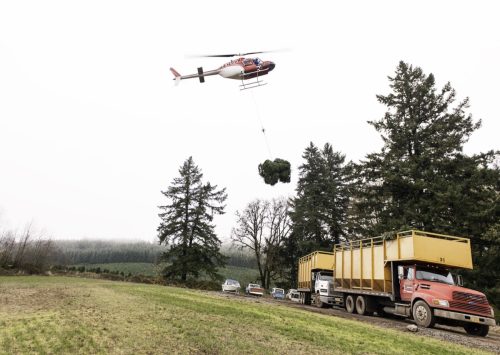
It’s not easy transporting thousands of pounds of Christmas trees each year, but helicopters can really help expedite the process. Bundles of trees are hooked onto lines dangling from the bottom of the helicopter to bring them out of the fields and into the hands of local vendors.
34. Christmas trees are recyclable.
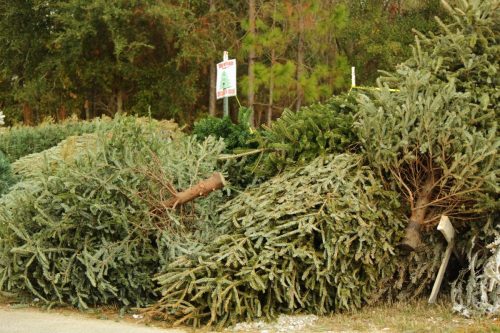
When the holiday season comes to an end, be sure to recycle your Christmas tree. Obviously, recycled trees can be turned into mulch or compost, but that’s not the only option. Additionally, old Christmas trees can be shredded and placed on hiking paths to keep the trail marked and the ground stable. They can also be donated to elephants for food at a sanctuary in Tennessee! If you’re elsewhere in the country, check out this link to find a tree recycling center near you.
Wrapping Up
That’s it for our list of Christmas tree facts, but be sure to check back with us soon for even more holiday trivia. You can also sign up for our newsletter so you don’t miss out on what’s next.